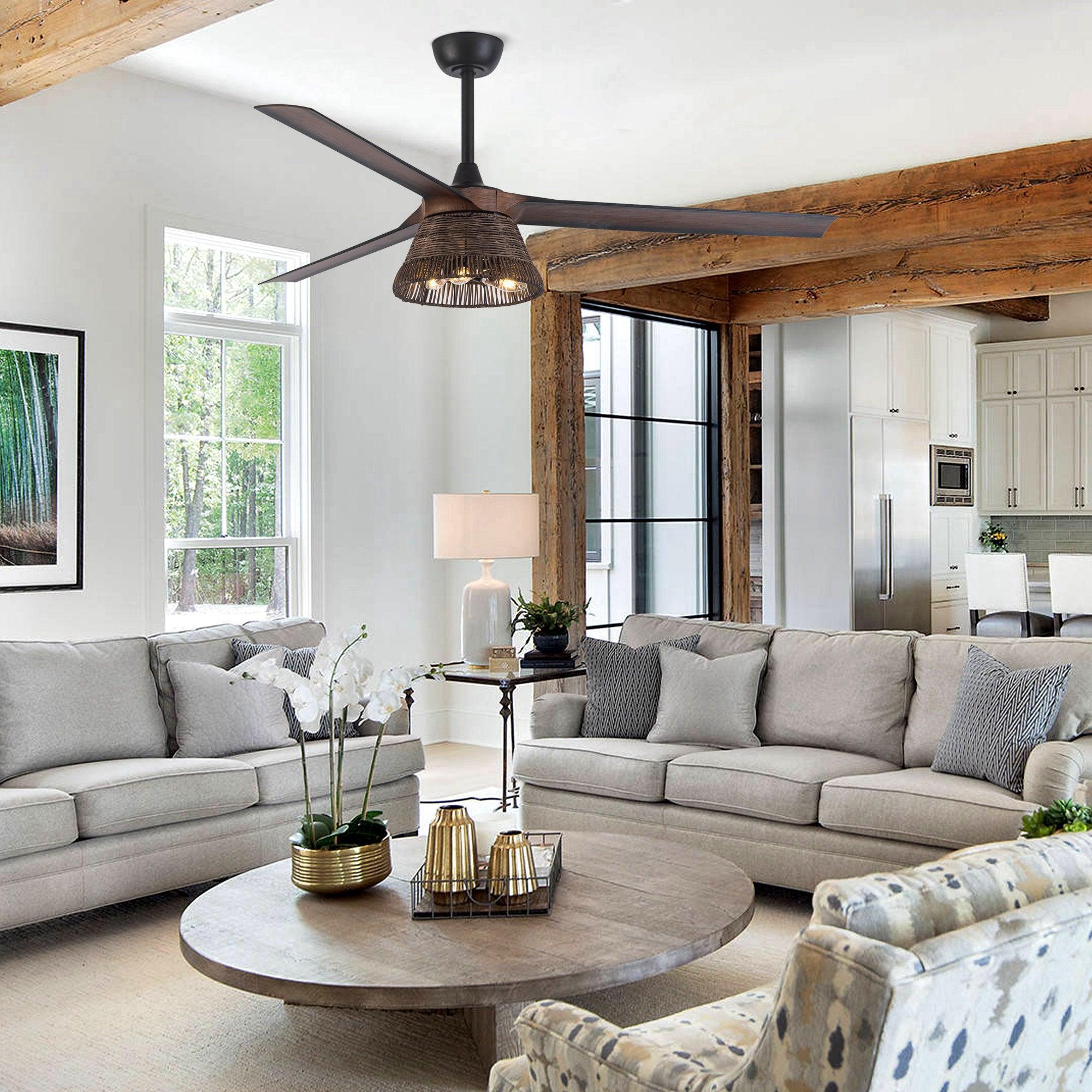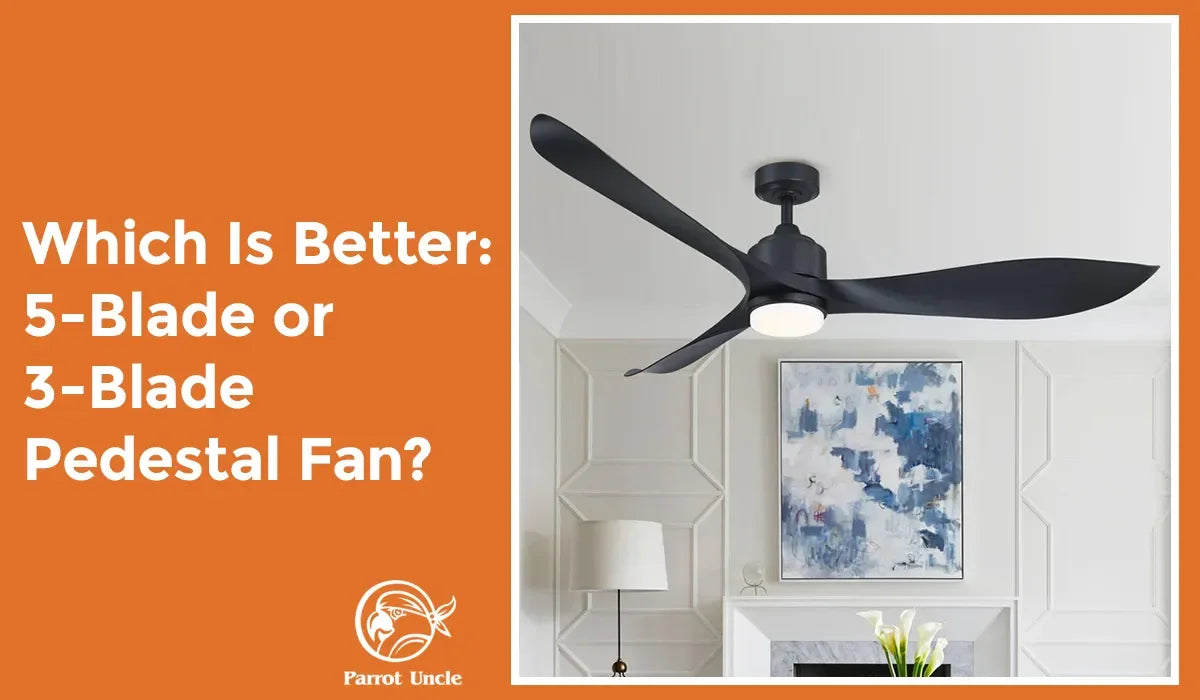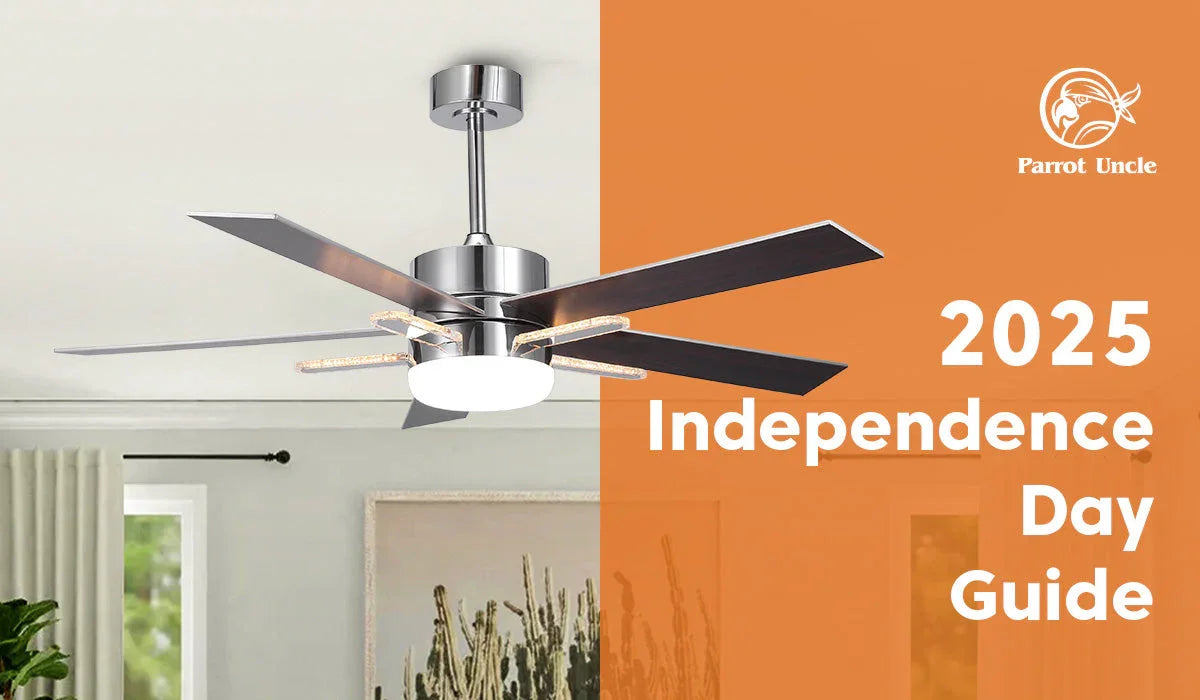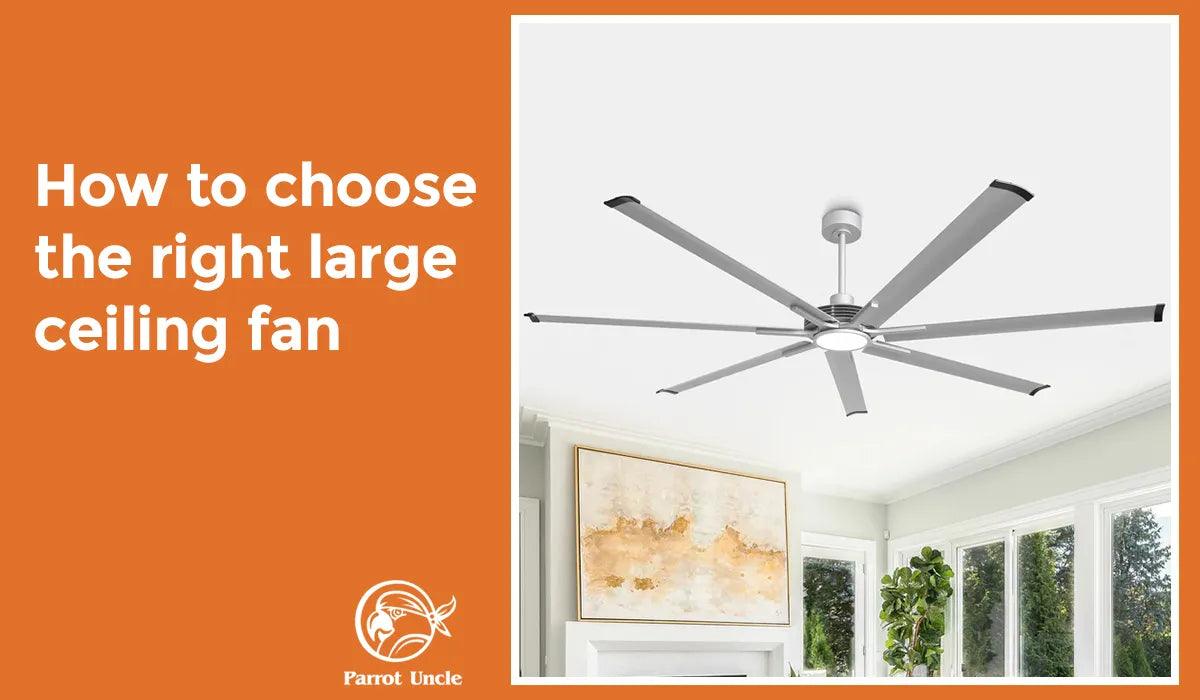Choosing the right ceiling fan can feel surprisingly complex. You're likely thinking about more than just aesthetics; you're considering airflow, energy efficiency, noise levels, and, of course, cost. A central question often arises: Are 5-blade ceiling fans better than their 3-blade counterparts? This comprehensive guide dives deep into the 5-blade vs. 3-blade ceiling fan debate, equipping you with the knowledge to make the best choice for your needs in 2025.
 Understanding the Basics: Why Ceiling Fans Matter
Understanding the Basics: Why Ceiling Fans Matter
Before we jump into the nitty-gritty of blade count, let's quickly recap why ceiling fans are a valuable addition to any home. Ceiling fans aren't just decorative; they are essential for managing indoor comfort and potentially reducing energy costs.
- Circulation and Comfort: Ceiling fans circulate air, which can make a room feel cooler in the summer and warmer in the winter. In the summer, the downdraft created by the fan helps evaporate moisture from your skin, providing a cooling effect. In the winter, reversing the fan's direction creates an updraft that pushes warm air (which naturally rises) back down, redistributing heat throughout the room.
- Energy Savings: By circulating air, ceiling fans allow you to rely less on your air conditioner or furnace. This can translate into significant energy savings. According to the U.S. Department of Energy, using a ceiling fan can allow you to raise your thermostat by about 4°F without sacrificing comfort.
- Aesthetic Appeal: Ceiling fans come in a wide variety of styles, finishes, and sizes, making it easy to find one that complements your home's décor.
So, with the importance of ceiling fans established, let's delve into the crucial debate: 5-blade vs. 3-blade.
5-Blade vs. 3-Blade: The Core Differences
The primary difference between these two types of ceiling fans lies, obviously, in the number of blades. However, this seemingly simple difference has implications for airflow, efficiency, noise, and aesthetics.
Airflow and Efficiency: Debunking the Myths
Many people assume that more blades automatically equate to better airflow. However, this isn't necessarily true. The pitch (angle) of the blades, the motor's power, and the blade size are all more significant factors in determining airflow.
- 3-Blade Fans: Generally, 3-blade fans are known for their efficiency and ability to move air more forcefully. They encounter less air resistance, allowing the motor to operate more efficiently, and potentially creating a stronger breeze.
- 5-Blade Fans: 5-blade fans often have a reputation for being quieter and creating a softer, gentler breeze. The increased surface area can move more air overall, but this is often at the cost of efficiency.
Important Note: The Airflow Performance Ratio (AFPR) is a useful metric to compare the efficiency of different ceiling fans. This ratio measures the amount of airflow (in cubic feet per minute, CFM) produced per watt of electricity consumed.
Noise Levels: Keeping Things Quiet
Noise is a significant concern for many homeowners, especially in bedrooms.
- 3-Blade Fans: 3-blade fans can be noisier than 5-blade fans, especially at higher speeds. The reduced resistance means the motor works a little harder, and the blades cutting through the air can produce more audible noise.
- 5-Blade Fans: The additional blades typically distribute the workload, resulting in smoother and quieter operation. This makes them a popular choice for bedrooms and other noise-sensitive areas.
Aesthetics: Style and Preference
The aesthetic appeal of a ceiling fan is entirely subjective.
- 3-Blade Fans: Often considered more modern and minimalist in design. They are also seen as industrial or even aviation inspired. They can be a great fit for contemporary or minimalist homes.
- 5-Blade Fans: Generally perceived as more traditional and elegant. They often fit better in classic or formal settings.
Cost: Initial Investment and Long-Term Savings
- 3-Blade Fans: 3-blade fans are typically less expensive than their 5-blade counterparts, primarily because they require fewer materials to manufacture.
- 5-Blade Fans: While the initial cost may be higher, the potential for increased energy savings (depending on the specific model and usage) can offset the difference in the long run.
Digging Deeper: Wants, Needs, Pain Points, and Motivations
To make an informed decision, you need to consider your individual wants, needs, and motivations. Let's explore some common scenarios:
- The Budget-Conscious Homeowner: For those on a tight budget, a 3-blade fan may seem like the obvious choice. However, consider the long-term energy costs. Investing in a slightly more expensive, energy-efficient 5-blade fan might save you money in the long run.
- The Light Sleeper: Noise is a major concern for light sleepers. A 5-blade fan is generally the better option due to its quieter operation. Look for models specifically designed for quiet performance.
- The Style-Savvy Decorator: The aesthetics of the ceiling fan are paramount. If you prefer a modern, minimalist look, a 3-blade fan is likely the better choice. If you prefer a more traditional, elegant style, a 5-blade fan will fit the bill.
- The Energy-Conscious Environmentalist: Energy efficiency is the top priority. Research the AFPR of different models and choose the fan with the highest ratio, regardless of the number of blades.
- The "Always Hot" Individual: Someone who is always hot will likely prioritize strong airflow. A 3-blade fan, known for moving air more forcefully, might be the better option.
Pain Points: Common pain points include noisy fans that disrupt sleep, inefficient fans that don't effectively cool a room, and fans that clash with the existing décor.
Motivations: Motivations for purchasing a ceiling fan include improving comfort, reducing energy costs, enhancing the aesthetic appeal of a room, and increasing the overall value of a home.
Effective Strategies for Choosing the Right Fan
Here are some strategies to help you choose the right ceiling fan:
- Assess Your Needs: Consider the size of the room, the climate, your personal preferences, and your budget.
- Research Airflow (CFM): Look for the CFM rating of different models to compare their airflow capabilities. Higher CFM ratings indicate better airflow.
- Check the Airflow Performance Ratio (AFPR): Compare the AFPR of different models to assess their energy efficiency. Higher AFPR ratings indicate better energy efficiency.
- Read Customer Reviews: See what other customers have to say about the noise levels, airflow, and overall performance of different models.
- Consider the Motor: Look for fans with high-quality motors that are designed for quiet and efficient operation. DC motors are generally more energy-efficient than AC motors.
- Think About Control Options: Choose a fan with the features you need, such as a remote control, variable speed settings, and a reverse function for winter use.
- Factor in Installation: Consider whether you'll be able to install the fan yourself or if you'll need to hire a professional.
Tips and Tricks for Optimal Ceiling Fan Performance
- Proper Installation: Ensure the fan is installed correctly, according to the manufacturer's instructions. This will ensure optimal performance and prevent wobbling or other issues.
- Regular Cleaning: Dust the blades regularly to maintain airflow efficiency. Dust buildup can reduce the fan's performance.
- Use the Reverse Function: In the winter, reverse the fan's direction to push warm air down from the ceiling.
- Adjust Fan Speed: Adjust the fan speed to suit your needs and the ambient temperature.
- Combine with Air Conditioning: Use the ceiling fan in conjunction with your air conditioner to improve comfort and reduce energy costs.
Common Mistakes to Avoid
- Buying the Wrong Size Fan: Choosing a fan that is too small or too large for the room will negatively impact its performance. Consult a size chart to determine the appropriate fan size for your room.
- Ignoring the Ceiling Height: If you have low ceilings, choose a "hugger" or "flush mount" fan that sits close to the ceiling.
- Overlooking the Motor Quality: A cheap, poorly-made motor will be noisy and inefficient. Invest in a fan with a high-quality motor.
- Neglecting Maintenance: Neglecting regular cleaning and maintenance will reduce the fan's performance and lifespan.
- Focusing Solely on Price: While price is a factor, don't sacrifice quality and performance for a cheaper fan.
Step-by-Step Approach to Choosing a Ceiling Fan
- Determine Room Size: Measure the square footage of the room where you'll be installing the fan.
- Consult a Size Chart: Use a size chart to determine the appropriate fan size for your room (e.g., a room less than 75 square feet might require a 29-36 inch fan, while a room over 400 square feet may require a 52-56 inch fan or larger).
- Set a Budget: Determine how much you're willing to spend on a ceiling fan.
- Research Different Models: Read reviews, compare specifications, and consider the different features available.
- Consider Style and Finish: Choose a fan that complements your home's décor.
- Check the Motor Type and AFPR: Prioritize fans with energy-efficient motors and high AFPR ratings.
- Read Customer Reviews: Pay attention to what other customers have to say about the fan's noise levels, airflow, and overall performance.
- Make Your Purchase: Choose a fan that meets your needs and fits your budget.
Why Blade Count Matters and How It Benefits You
The number of blades on a ceiling fan influences its airflow characteristics, noise levels, and aesthetics. Understanding these differences allows you to choose a fan that best suits your specific needs and preferences.
- 3-Blade Benefits: More efficient airflow, potentially stronger breeze, often more affordable, modern aesthetic.
- 5-Blade Benefits: Quieter operation, gentler breeze, often more traditional aesthetic, potentially better air circulation in some situations.
Comparing Pros and Cons: 5-Blade vs. 3-Blade Ceiling Fans
Here's a quick summary of the pros and cons of each type of fan:
Table 1: 3-Blade Ceiling Fan - Pros and Cons
| Feature | Pro | Con |
|---|---|---|
| Airflow | Efficient, strong breeze | Can be less consistent airflow across the room |
| Noise | Potentially noisier | May be less desirable for bedrooms or noise-sensitive areas |
| Aesthetics | Modern, minimalist | May not suit traditional décor |
| Cost | Generally less expensive | May not be as energy-efficient as some 5-blade models |
| Energy Efficiency | Can be highly efficient, depending on the motor and design |
Table 2: 5-Blade Ceiling Fan - Pros and Cons
| Feature | Pro | Con |
|---|---|---|
| Airflow | Gentler breeze, potentially better overall circulation | Can be less efficient than 3-blade fans |
| Noise | Quieter operation | Potentially more expensive |
| Aesthetics | Traditional, elegant | May not suit modern décor |
| Cost | Potentially more expensive | May require more energy to operate |
| Energy Efficiency | Can be energy-efficient with the right motor and design |
FAQs About Ceiling Fans
Here are some frequently asked questions about ceiling fans:
- Are 5-blade fans quieter than 3-blade fans? Generally, yes. The additional blades distribute the workload, resulting in smoother and quieter operation.
- Do more blades mean better airflow? Not necessarily. The pitch of the blades, the motor's power, and the blade size are all more significant factors in determining airflow.
- Are 3-blade fans more energy-efficient? 3-blade fans can be more energy-efficient, as they encounter less air resistance. However, the AFPR is the best metric to compare energy efficiency.
- What size ceiling fan do I need? Consult a size chart based on the square footage of your room.
- How do I clean a ceiling fan? Dust the blades regularly with a microfiber cloth or duster.
- How do I reverse the direction of my ceiling fan? Most ceiling fans have a switch located on the motor housing that allows you to reverse the direction of the blades.
- What is a DC motor? A DC motor is a type of electric motor that is more energy-efficient and quieter than traditional AC motors.
- What is a hugger or flush mount ceiling fan? A hugger or flush mount ceiling fan is designed for rooms with low ceilings. It sits close to the ceiling to maximize headroom.
Market Insights: Current Status and Future Trends
The ceiling fan market is currently experiencing growth, driven by increasing demand for energy-efficient and stylish home cooling solutions.
- Current Status: Energy efficiency is a major trend, with consumers increasingly seeking out fans with DC motors and high AFPR ratings. Smart ceiling fans, which can be controlled via smartphone apps or voice assistants, are also gaining popularity.
- Future Trends: Expect to see continued innovation in motor technology, blade design, and smart features. Sustainable materials and eco-friendly manufacturing processes will also become increasingly important. The concept of aero-harmonization, where fan design is specifically tailored to minimize noise and maximize efficiency through advanced aerodynamic principles, is something to watch for.
Highlights and How to Stand Out
To stand out from the competition, ceiling fan manufacturers need to focus on:
- Energy Efficiency: Develop fans with highly efficient motors and innovative blade designs that maximize airflow while minimizing energy consumption.
- Quiet Operation: Engineer fans that operate virtually silently, especially at higher speeds.
- Stylish Design: Offer a wide variety of styles and finishes to appeal to a diverse range of tastes.
- Smart Features: Integrate smart features, such as smartphone control, voice activation, and automated scheduling, to enhance convenience and comfort.
- Durability and Reliability: Build fans that are built to last, with high-quality components and robust construction.
Case Detail: Comparing Two Similar Fans
Let's compare two fictional ceiling fans, Fan A (3-blade) and Fan B (5-blade), with similar features but different blade configurations.
Fan A (3-Blade):
- Motor: AC Motor
- CFM: 4500
- AFPR: 80
- Noise Level: 45 dB
- Style: Modern
Fan B (5-Blade):
- Motor: DC Motor
- CFM: 4200
- AFPR: 95
- Noise Level: 35 dB
- Style: Traditional
In this scenario, Fan A has a slightly higher CFM rating, indicating slightly better airflow. However, Fan B has a significantly higher AFPR, indicating better energy efficiency, and a lower noise level. The choice between these two fans would depend on the user's priorities: strong airflow versus energy efficiency and quiet operation.
Table 3: Case Detail Fan A VS Fan B
| Specs | Fan A | Fan B |
|---|---|---|
| Motor | AC | DC |
| CFM | 4500 | 4200 |
| AFPR | 80 | 95 |
| Noise Level | 45dB | 35dB |
| Style | Modern | Traditional |
| Energy Efficient | Less | More |
| Air Flow | More | Less |
| Noise | Higher | Lower |
Table 4: Factors Considered Before Choosing Fan
| Factors | Considerations |
|---|---|
| Room Size | The size of the room for appropriate airflow coverage. |
| Ceiling Height | If the ceiling is high, consider the downrod; If low, consider the hugger or flush mount fan. |
| Style Preference | Whether you prefer 3-blade modern look or 5-blade traditional look. |
| Budget | How much can you afford to spend. |
| Noise Sensitivity | Consider the 5-blade fan If noise is a concern. |
| Energy Efficiency Requirements | If energy efficiency is the highest priority, look for DC motor or high AFPR models. |
Conclusion: Making the Right Choice
Ultimately, the "better" ceiling fan – whether 5-blade or 3-blade – depends entirely on your individual needs and preferences. By carefully considering the factors outlined in this guide, you can make an informed decision and choose a ceiling fan that will provide years of comfort, energy savings, and aesthetic enjoyment. In 2025, the choice is yours, empowered by knowledge!
*Some content was generated by Google Gemini.












